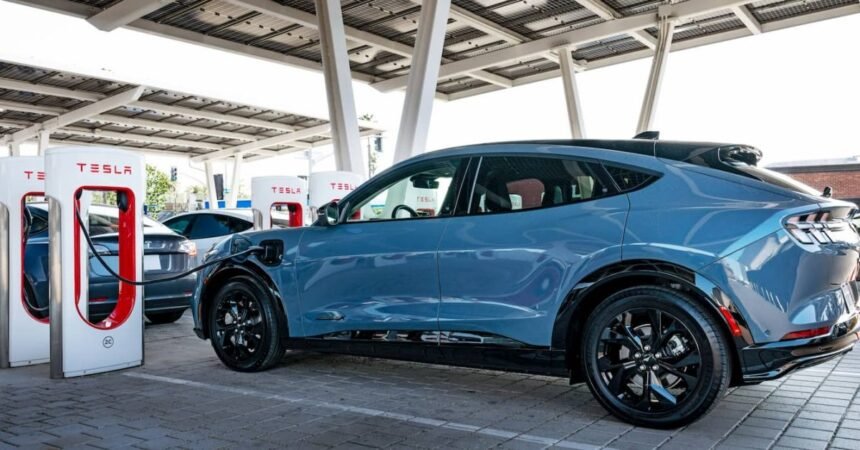Ford is making significant strides in the electric vehicle (EV) market, with plans to start producing Lithium Iron Phosphate (LFP) batteries in the US in 2026. This move is a crucial step for the automaker as it gears up to launch its next-generation, lower-cost EVs. The company believes that the new facility will not only help deliver more affordable vehicles but also enable the US to compete on a global scale.
The announcement of the new battery plant was made over two years ago under the Biden administration, and Ford has confirmed that it remains on track to begin production in 2026. The company has invested $3 billion in building the LFP battery plant in Marshall, Michigan, with expectations of receiving around $700 million in federal tax credits to help offset the cost.
However, Ford may face challenges due to political factors. With the Trump administration and Republicans in Congress looking to end incentives for EVs and clean energy projects, Ford’s plans could encounter obstacles. Additionally, there are efforts to pass a bill that would ban federal support for US battery plants using technology and materials from China, a situation that puts Ford at a disadvantage since it is licensing battery and manufacturing tech from China’s CATL.
Despite these challenges, Ford is standing by its decision to build the facility. The company’s vice president of technology platform programs and EV systems, Lisa Drake, emphasized the historic significance of the facility as it prepares to produce LFP battery cells and battery packs domestically. Ford is already producing C-sample cells at an off-site equipment supplier location, which will be used for its next-generation EV program.
The plant is expected to lower EV costs and help the US compete globally in energy storage production. Once operational, Ford anticipates adding around 35 GWh of LFP battery capacity and approximately 1,700 new employees. This move aligns with Ford’s strategy to offer lower-cost EVs in the US market.
Despite delays or cancellations of some EV projects, Ford’s LFP battery plant remains a key component of its push for lower-cost EVs. The company aims to match the cost structure of leading Chinese players in the EV market, not just in battery pricing but in overall system costs. Ford’s new low-cost EV platform will support eight body styles, including trucks, crossover SUVs, and potentially sedans.
The first EV built on Ford’s new platform, a midsize electric pickup, is expected to resemble the current Ranger model. Ford’s upcoming lower-cost models, along with its commitment to domestic battery production, could help the company regain its competitive edge in the EV market. As the industry continues to evolve, Ford’s strategic decisions will play a crucial role in shaping its future success.







